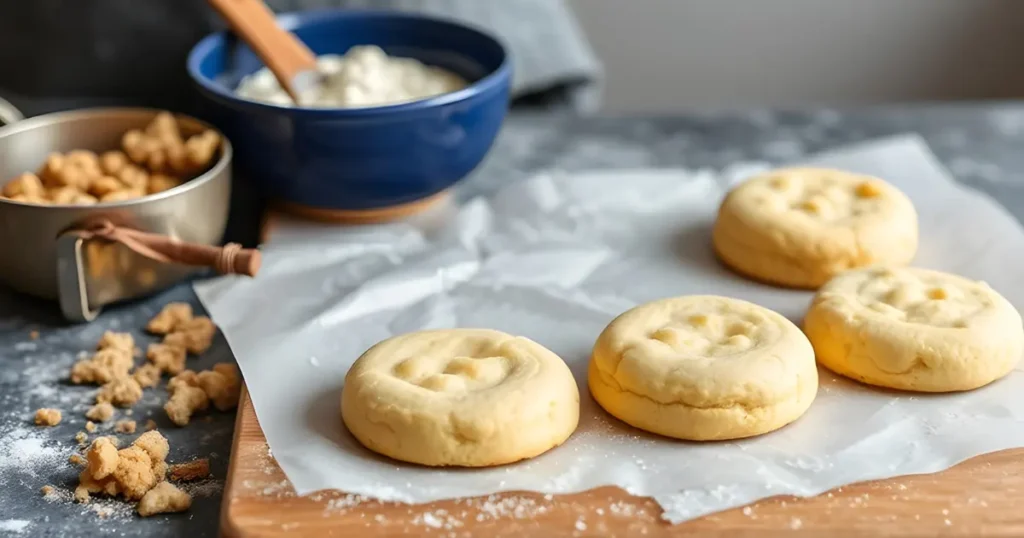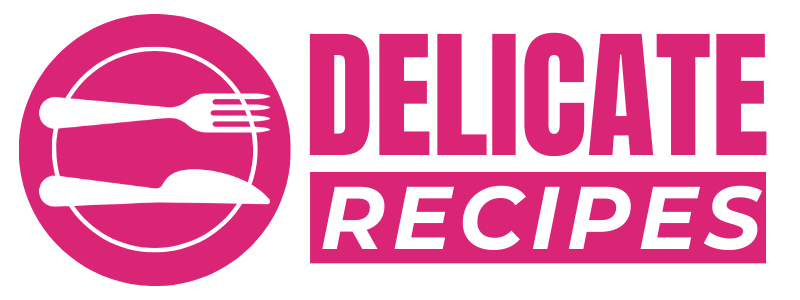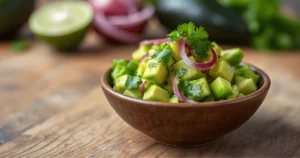
Calling all gluten-free bakers! Are you ready to dive into the world of homemade, light, and fluffy Gluten Free Biscuit Recipe ? This easy recipe is here to take your baking to the next level. It’s perfect for those with dietary restrictions or anyone looking for a delicious, guilt-free treat.
Get ready to be amazed as we show you how to make biscuits that are gluten-free and melt-in-your-mouth. With the right ingredients and a few simple steps, you’ll get the perfect light and fluffy texture. Impress your family and friends with your gluten-free baking skills!
Key Takeaways
- Discover the ease of making delicious gluten-free biscuits at home
- Learn techniques for achieving a light and fluffy texture in your gluten-free baked goods
- Explore the benefits of incorporating gluten-free baking into your lifestyle
- Gain the confidence to experiment with various gluten-free flour blends
- Uncover the essential tools and equipment needed for perfect gluten-free biscuit making
Why Choose Gluten Free Biscuits for Your Baking Adventures
Baking is a fun hobby, but it can be tough for those with gluten issues. Luckily, gluten-free baking opens up new possibilities. Gluten-free biscuits are a great starting point for your baking journey.
Understanding Gluten Sensitivity and Celiac Disease
Gluten sensitivity and celiac disease require a gluten-free diet. Gluten sensitivity can lead to stomach problems, headaches, and tiredness. Celiac disease damages the small intestine when gluten is eaten. Gluten-free biscuits make baking safe and fun for those with these conditions.
Benefits of Gluten Free Baking
Gluten-free diets can improve digestion, boost energy, and reduce inflammation. Gluten-free baking lets you enjoy your favorite treats while staying healthy. It’s also a creative way to try new ingredients and recipes.
Gluten-free biscuits are a tasty, healthy option for baking. They cater to dietary needs and offer health benefits. This makes baking a rewarding and delicious journey for everyone involved.
Essential Ingredients for Perfect Gluten Free Biscuit Recipe
Making delicious gluten-free biscuits needs careful picking of ingredients. These ingredients must work well together for the right texture and taste. You’ll need gluten-free flour blends, dairy substitutes, and leavening agents. Each one is important for your homemade treats.
For biscuits that are light and fluffy, here are the key ingredients:
- Gluten-free flour – A mix of flours like rice, tapioca, or almond is key for the biscuit’s structure and rise.
- Dairy alternatives – Use unsweetened almond, coconut, or oat milk for moisture and richness in your biscuits.
- Leavening agents – Baking powder and baking soda are vital for the biscuits’ lift and rise, avoiding a dense texture.
- Healthy fats – Add coconut or avocado oil for a tender and flaky biscuit texture.
- Binding agents – Xanthan gum or psyllium husk help the gluten-free dough stick together, preventing it from crumbling.
Choosing and mixing these ingredients carefully will help you make gluten-free biscuits that are light, fluffy, and full of flavor. They’ll be a wonderful addition to your baking collection.
| Ingredient | Role in Gluten-Free Biscuits |
|---|---|
| Gluten-free flour | Provides the foundation for the biscuit structure and texture. |
| Dairy alternatives | Adds moisture, richness, and flavor to the biscuits. |
| Leavening agents | Responsible for the rise and fluffy interior of the biscuits. |
| Healthy fats | Contributes to the tender and flaky texture of the biscuits. |
| Binding agents | Helps hold the gluten-free dough together, preventing crumbling. |
“The key to perfect gluten-free biscuits is finding the right balance of ingredients that work together to create the desired texture and flavor.”
The Best Gluten Free Flour Blends for Biscuit Making
Choosing the right flour blend is key to making delicious gluten-free biscuits. You can explore both store-bought and homemade options. This will help you achieve biscuits that are light, fluffy, and full of flavor.
Store-Bought vs Homemade Flour Blends
Store-bought gluten-free flour blends are convenient. They come pre-mixed with ingredients like rice, tapioca, or potato starch. They ensure a consistent texture and save time. But, making your own blend lets you control the ingredients and tailor it to your baking needs.
Xanthan Gum: Why It’s Important in Gluten Free Biscuit Recipe
Whether you use a store-bought or homemade blend, xanthan gum is essential. It acts like gluten, helping your biscuits have the right texture. It’s a key ingredient for gluten-free baking.
Proper Flour Storage Tips
- Keep gluten-free flour blends in an airtight container in a cool, dry place. This keeps them fresh and prevents spoilage.
- Don’t store flour near heat or in direct sunlight. These conditions can make the flour go bad faster.
- For longer storage, refrigerate or freeze your gluten-free flour blends if you won’t use them in a few weeks.
Understanding gluten-free flour blends, the role of xanthan gum, and how to store flour properly will help you bake amazing gluten-free biscuits.
Kitchen Tools and Equipment You’ll Need
When baking gluten-free biscuits, the right baking tools are key. You’ll need an pastry cutter and a biscuit cutter. These tools help you get light, fluffy, and tasty results.
- Pastry Cutter: This tool is essential for cutting cold baking tools into the dry ingredients. It makes the biscuits flaky and tender.
- Biscuit Cutter: Get a set of circular biscuit cutters to shape your biscuits. They come in various sizes for both large and small biscuits.
- Baking Sheet: A sturdy, rimmed baking sheet is crucial for baking your gluten-free biscuits. Choose one made of heavy-duty materials for even heat.
- Parchment Paper: Use parchment paper on your baking sheet. It prevents biscuits from sticking and makes cleanup easy.
- Mixing Bowl: Pick a large, sturdy mixing bowl. It’s needed for mixing and kneading the dough.
- Measuring Cups and Spoons: Accurate measurements are vital in gluten-free baking. Get a reliable set of measuring cups and spoons.
With these baking tools, you’re ready to make delicious gluten-free biscuits. They’ll impress your family and friends.

Gluten Free Biscuit Recipe – Step-by-Step
Making perfect gluten-free biscuits starts with a good mixing and prep process. It’s all about controlling temperature and handling the dough right. Each step is important to get biscuits that are light, fluffy, and delicious.
Temperature Control Tips
Keeping the right temperature is crucial when working with gluten-free dough. Make sure all your ingredients, like the flour blend, are at room temperature before starting. This ensures the dough mixes well and doesn’t become tough or dense.
Handling Gluten-Free Dough
Gluten-free dough is delicate and needs a gentle touch. Don’t overwork the dough, as it can make the biscuits tough and dry. Mix and knead the dough lightly until it just comes together.
Proper Folding Techniques
- Lightly flour your work surface and rolling pin before rolling out the dough.
- Gently roll the dough into a rectangle, about 1/2 inch thick.
- Fold the dough in half, then fold it in half again to create layers.
- Repeat the folding process 2-3 times, being careful not to overwork the dough.
- This layering technique helps create the signature flaky texture of biscuits.
By following these steps and techniques, you’ll be on your way to baking amazing gluten-free biscuits. They’re sure to impress everyone.
Top Gluten Free Biscuit Recipe Ideas
Exploring gluten-free baking is a fun journey, and biscuits are a great place to start. Whether you’re after savory or sweet, there’s a gluten-free biscuit recipe for you. Let’s dive into some popular and creative ideas to spark your next baking adventure.
Savory Gluten Free Biscuits
For a savory treat, try gluten-free cheddar biscuits. They’re packed with sharp cheddar and a bit of garlic. They’re perfect with soups, stews, or breakfast. Another great choice is gluten-free chive and onion biscuits. They mix aromatic herbs with caramelized onions for a tasty experience.
Sweet Gluten Free Biscuits
Got a sweet tooth? Make some gluten-free honey biscuits. They’re sweetened with honey and have juicy blueberries. For something richer, try gluten-free chocolate chip biscuits. The chocolate chips add a special touch to the tender biscuit.
Flavored Gluten Free Biscuits
Try unique flavors with your gluten-free biscuits. Gluten-free rosemary and parmesan biscuits are savory and aromatic. Gluten-free lemon and thyme biscuits add a refreshing citrus flavor. For a spicy kick, go for gluten-free jalapeño and cheddar biscuits.
These gluten-free biscuit recipes offer a wide range of flavors to try. Don’t be afraid to experiment with different ingredients. You might just find your new favorite biscuit!

Baking Tips for Light and Fluffy Results
Getting your gluten-free biscuits just right is all about the baking process. You need the right baking temperature and timing. Here are some expert tips to help you make fluffy texture biscuits every time.
Optimal Oven Temperature Settings
The secret to light and airy biscuits is the oven temperature. Try to keep it between 400-425°F (200-220°C). This heat makes the biscuits rise fast, giving them a soft inside and a golden outside.
Timing and Doneness Indicators
- Start by setting your timer for 12-15 minutes. Watch the biscuits closely, as gluten-free doughs can brown quickly.
- Check if the tops are lightly golden and the edges are crisp. A toothpick in the center should come out clean, showing they’re done.
- To keep them extra fluffy, take them out of the oven when the centers are set. Even if the tops aren’t as dark as you’d like.
Follow these tips on baking temperature and biscuit doneness for light, fluffy texture biscuits. Top them with your favorite ingredients and enjoy your homemade treats!
Storage and Reheating Guidelines
Keeping your homemade gluten-free biscuits fresh is key. Store them in an airtight container at room temperature for up to 3 days. If you want to keep them longer, freeze them for up to 3 months.
To reheat frozen biscuits, preheat your oven to 350°F (175°C). Bake for 5-7 minutes until they’re warm. You can also microwave them for 20-30 seconds. But, microwaving might change their texture a bit.
Learning how to store and reheat biscuits is important. It lets you enjoy your gluten-free biscuits whenever you want. With these tips, your biscuits will always be light and fluffy, whether they’re fresh or from the freezer.
FAQ
What are the key benefits of choosing Gluten Free Biscuit Recipe?
Gluten-free biscuits are great for those who can’t eat gluten. They’re safe and tasty, making it easy to enjoy biscuits without the health issues gluten can cause.
What are the essential ingredients for making perfect Gluten Free Biscuit Recipe?
To make perfect gluten-free biscuits, you need gluten-free flours, like rice or almond flour. You also need dairy alternatives and leavening agents. These ingredients help create a light and fluffy texture.
What are the differences between store-bought and homemade gluten-free flour blends?
Store-bought blends are easy to find, but homemade offers more control. Making your own blend lets you pick the ingredients and add special items like xanthan gum for the right texture.
What kitchen tools and equipment are needed for making gluten-free biscuits?
You’ll need a pastry cutter or fork, a biscuit cutter, and a baking sheet or skillet. These tools help make the biscuits flaky and tender.
How do I properly handle and fold gluten-free biscuit dough?
When working with gluten-free dough, be gentle. Avoid overworking it to prevent toughness. Fold the dough a few times to create layers and work with chilled dough for better results.
What are some top Gluten Free Biscuit Recipe ideas to try?
Try making savory biscuits with cheddar and chive or sweet ones with honey and blueberries. Mixing different flavors can make your baking fun and exciting.
What are the optimal baking tips for achieving light and fluffy gluten-free biscuits?
For light biscuits, bake at 400°F and watch the time. Underbaked biscuits are dense, while overbaked ones are dry. Check for golden tops and use a toothpick to see if they’re done.
How should I store and reheat leftover gluten-free biscuits?
Keep leftover biscuits in an airtight container at room temperature for 3 days or freeze them. To reheat, use the oven or toaster oven to crisp the outside and warm the inside.
Useful Links
Explore a variety of gluten-free products on Amazon here: Gluten-Free Amazon Page. This collection provide snack foods, baking needs that cater for gluten intolerance or those who want gluten free products.







